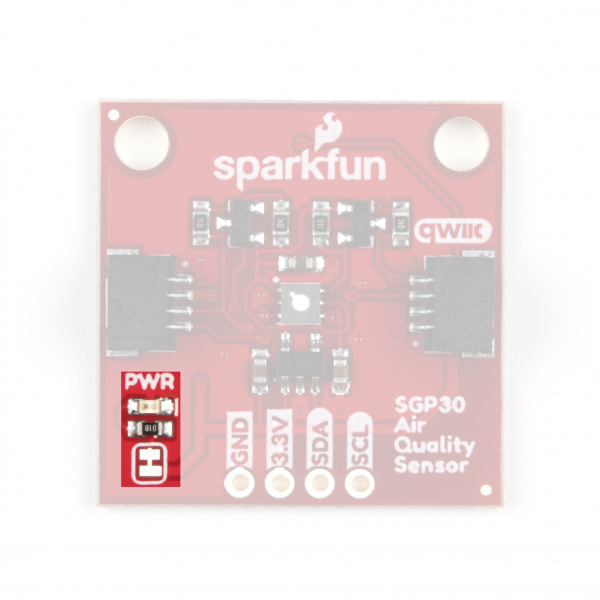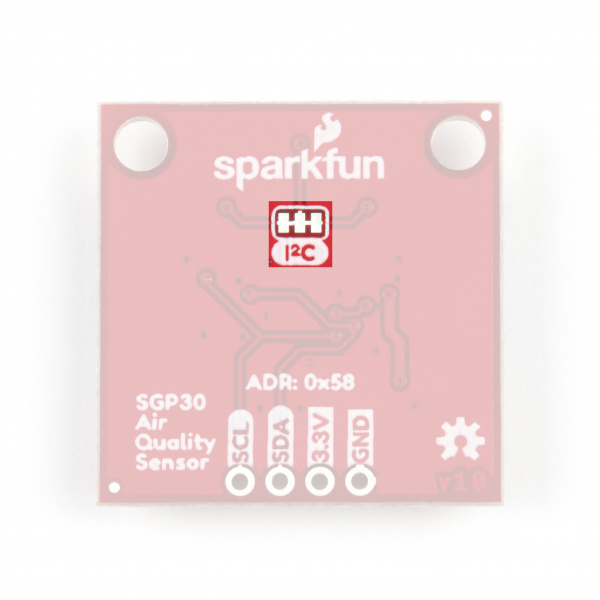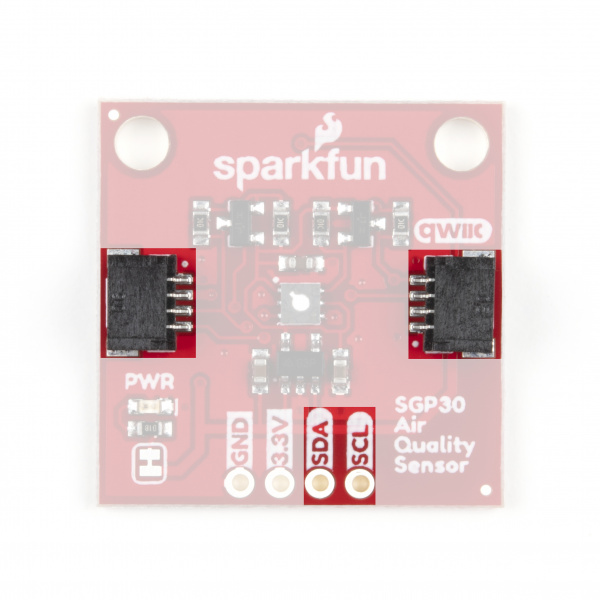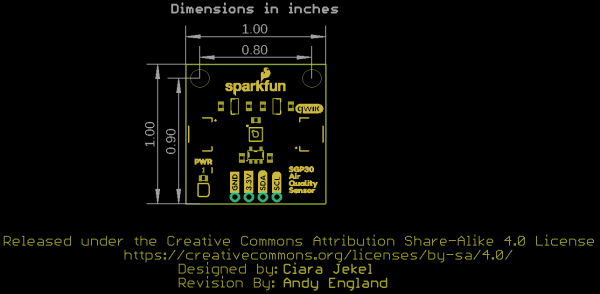SparkFun Air Quality Sensor - SGP30 (Qwiic) Hookup Guide
Hardware Overview
The brains of this breakout is the excellent SGP30 gas sensor from Sensirion. In this section we will cover some of the features and characteristics of the SGP30 as well as the hardware present on this breakout.
As we mentioned in the Introduction, the SGP30 gas sensor outputs measurements of total VOCs (TVOC) in parts per billion (ppb), carbon dioxide (CO2) equivalent in parts per million (ppm) as well as raw gas readings of ethanol and hydrogen (H2). The ethanol and H2 readings are primarily intended for the SGP30's on-chip calibration and baseline compensation algorithms but they can be useful for rough measurements of both compounds. Refer to page 8 of the datasheet for more information on these raw signals.
The table below outlines the basic parameters of each sensing output. For a detailed description of these and all other aspects of the sensor, review the datasheet.
| Sensing Parameter | Value |
|---|---|
| TVOC Output Signal Range | 0 to 60,000 ppb |
| CO2eq Output Signal Range | 400 to 60,000 ppm |
| Ethanol Signal Measurement Range | 0 to 1,000 ppm |
| H2 Signal Measurement Range | 0 to 1,000 ppm |
Power
The SGP30 accepts a supply voltage between 1.62-1.98V so to work with the 3.3V standard for the Qwiic ecosystem, we added a voltage regulator to, well, regulate that 3.3V down to 1.8V. Power can be provided via the Qwiic connectors or through the labeled 3.3V and GND pins broken out to 0.1" header pins on this board.
Qwiic and I2C Interface
The SGP30 communicates via I2C so of course we broke out these pins to two Qwiic connectors as well as 0.1"-spaced header pins if you would prefer to use standard PTH connections. Since the sensor operates at 1.8V we have added transistors to both the SDA and SCL lines to level shift them from 3.3V so you can use it without issue with other Qwiic devices. Note, the HIGH side of this level circuit is tied directly to your power input so, as the note above regarding supply voltage warns, we recommend to power the board with 3.3V.
The SGP30's I2C address is 0x58 (1011000 bin) and is hardware-set. If you have other devices that share the same address as the SGP30 or need to use multiple SGP30 sensors on a single I2C bus, you will want to use a multiplexer/mux like the Qwiic Mux Breakout 8-Channel.
Jumpers
This breakout has two jumpers; one controls the power LED and the other enables the two 10K Ohm pull-up resistors on the SDA and SCL traces. Both are closed by default. To disable either of the jumpers, simply sever the trace between the pads. Disabling the power LED is particularly helpful for low-power applications to help reduce total current draw of the board. Note, if you disable the pull-up resistors, make sure the other devices on your I2C bus are running at 3.3V to avoid damaging the SGP30.
 |
 |
| Power LED Jumper | I2C Pull-Up Resistor Jumper |
Board Dimensions
We've designed the SparkFun Air Quality Sensor to match our Qwiic breakout standard. The board measures 1" x 1" and has two mounting holes that fit a 4-40 screw. For specific spacing measurements, take a look at the dimensional photo below.


